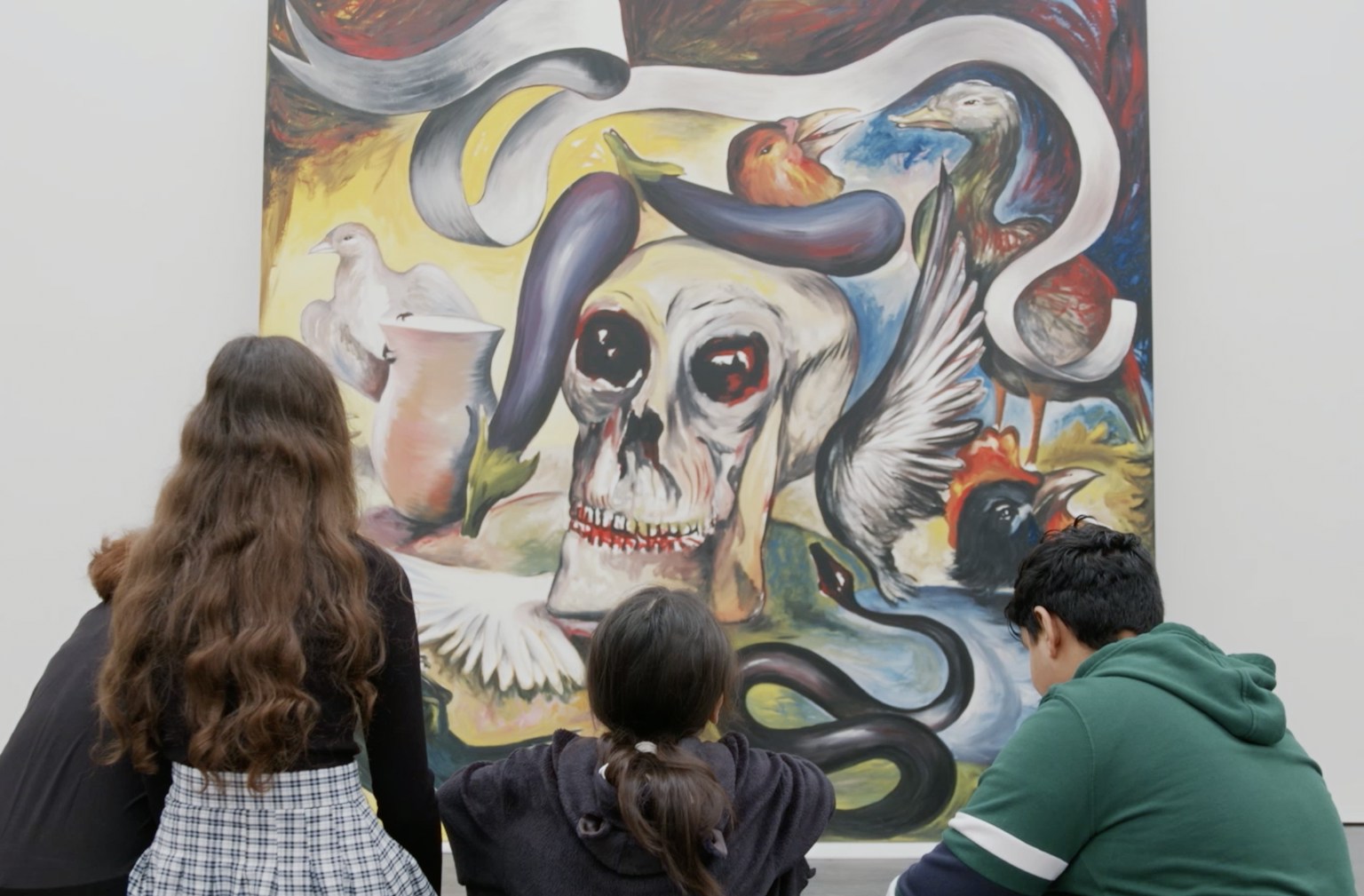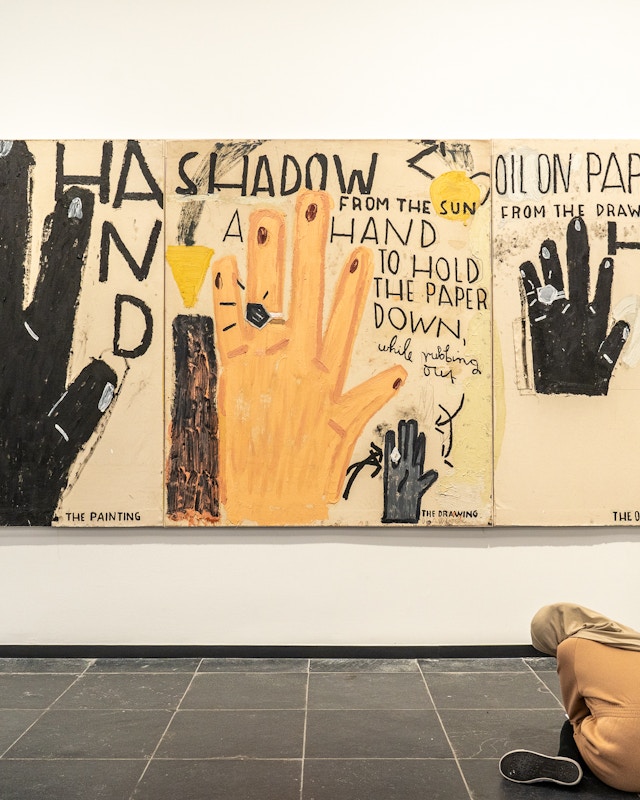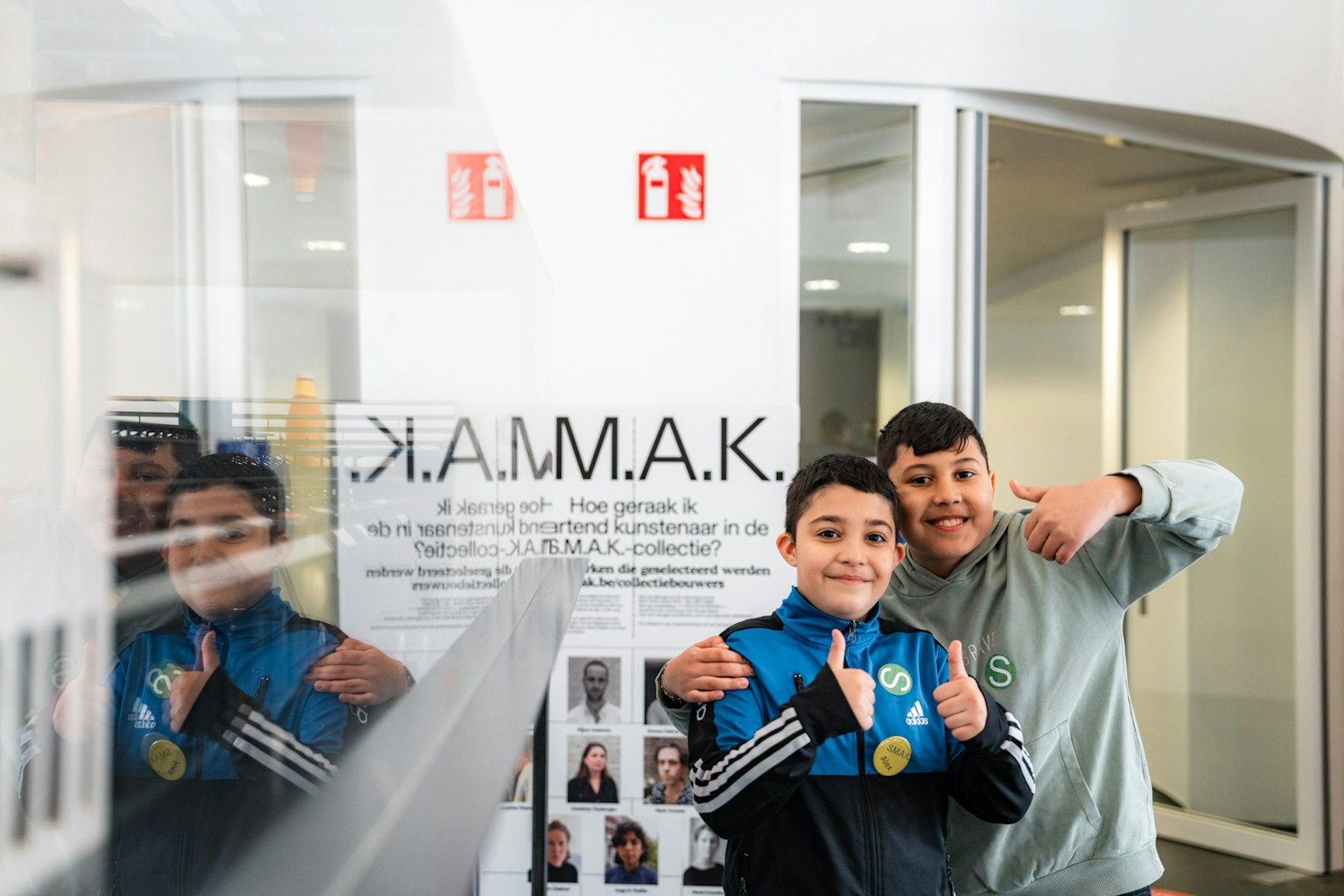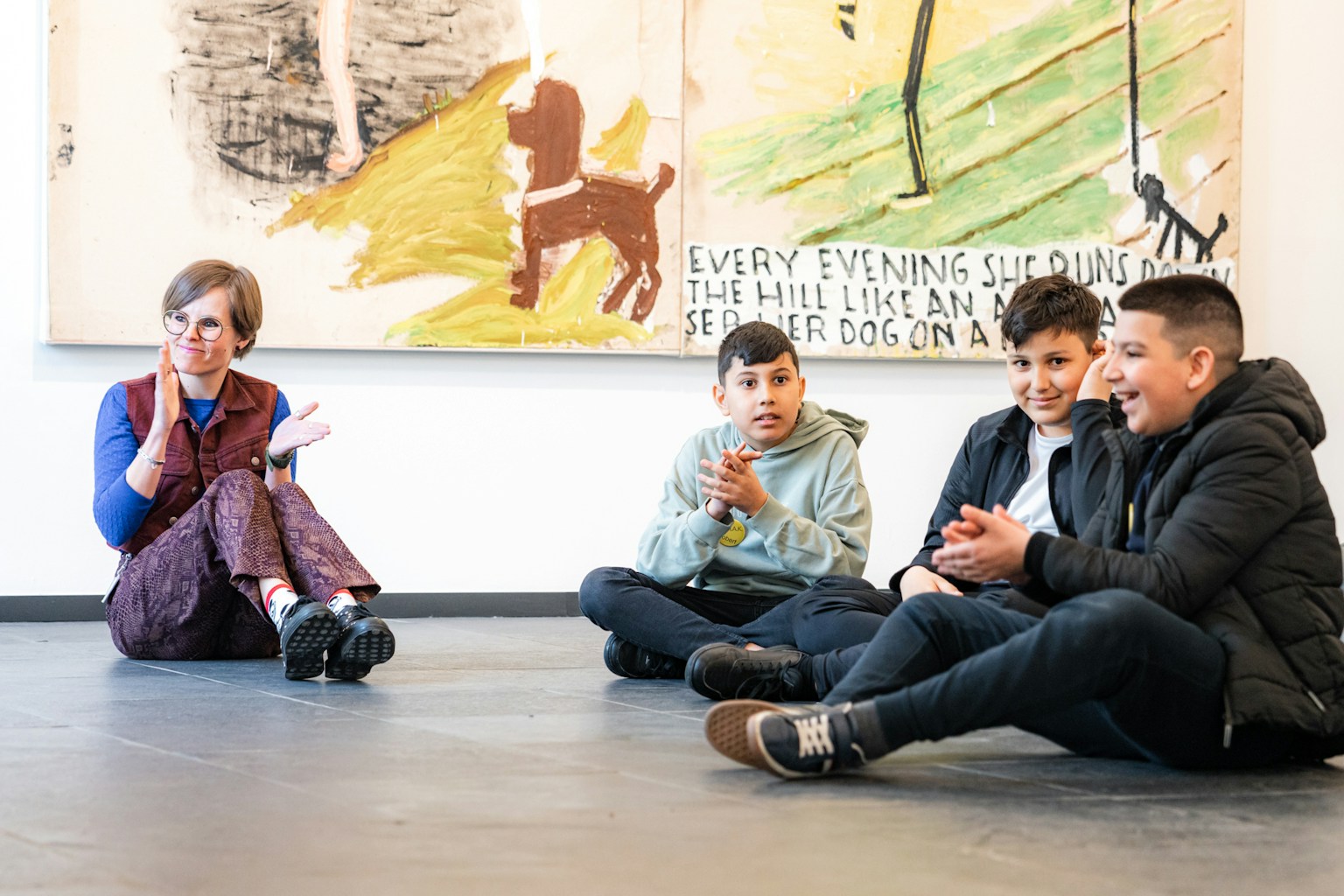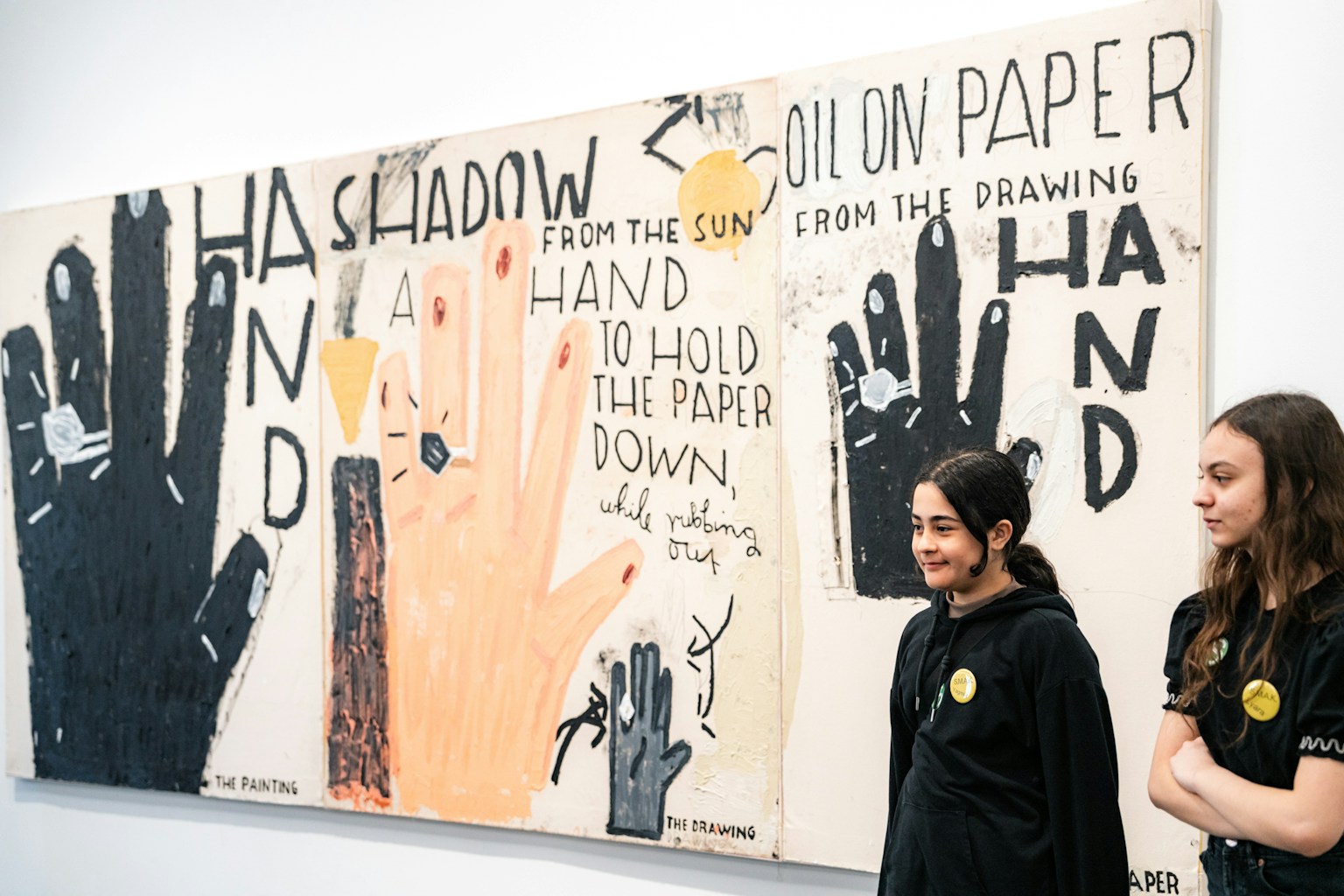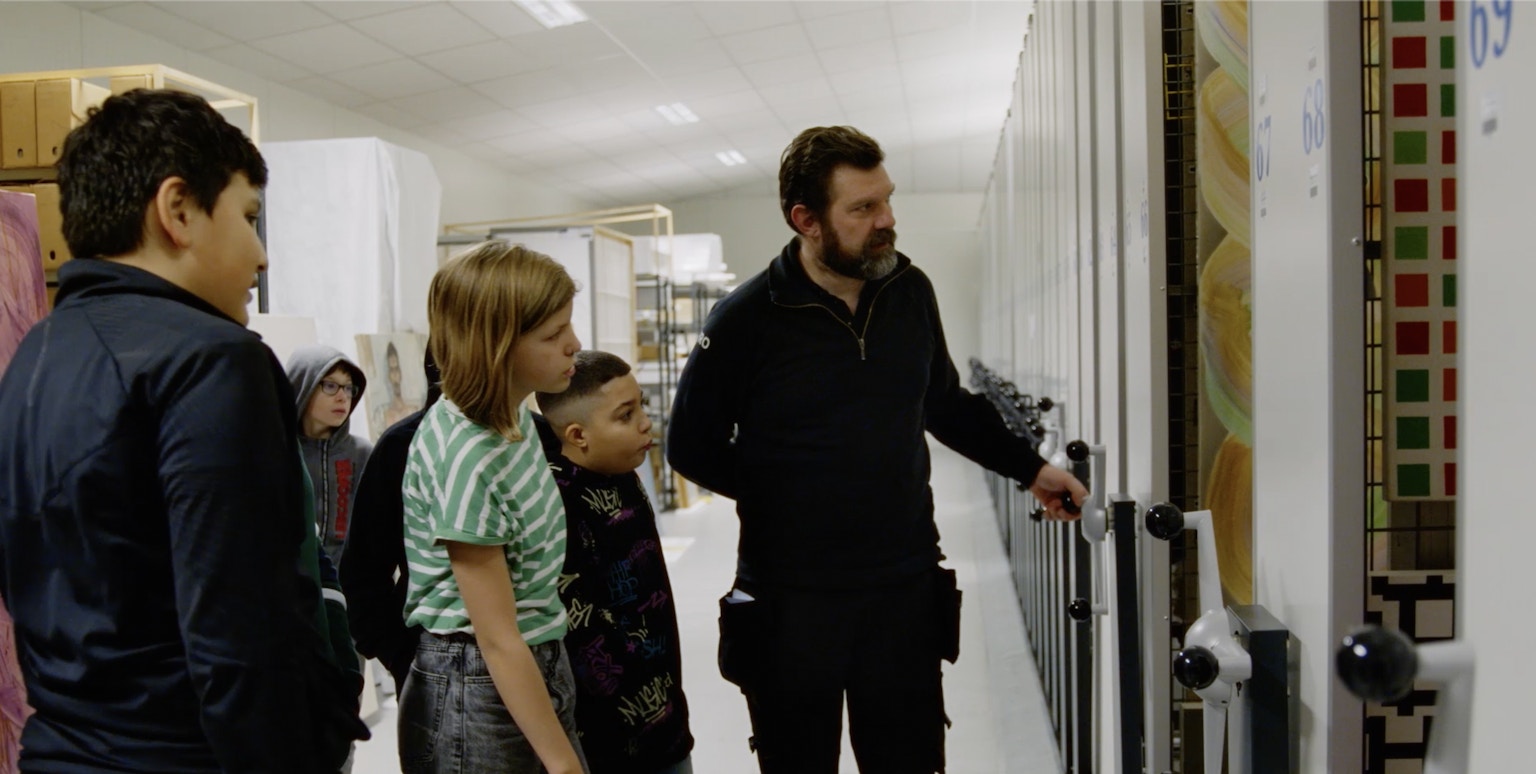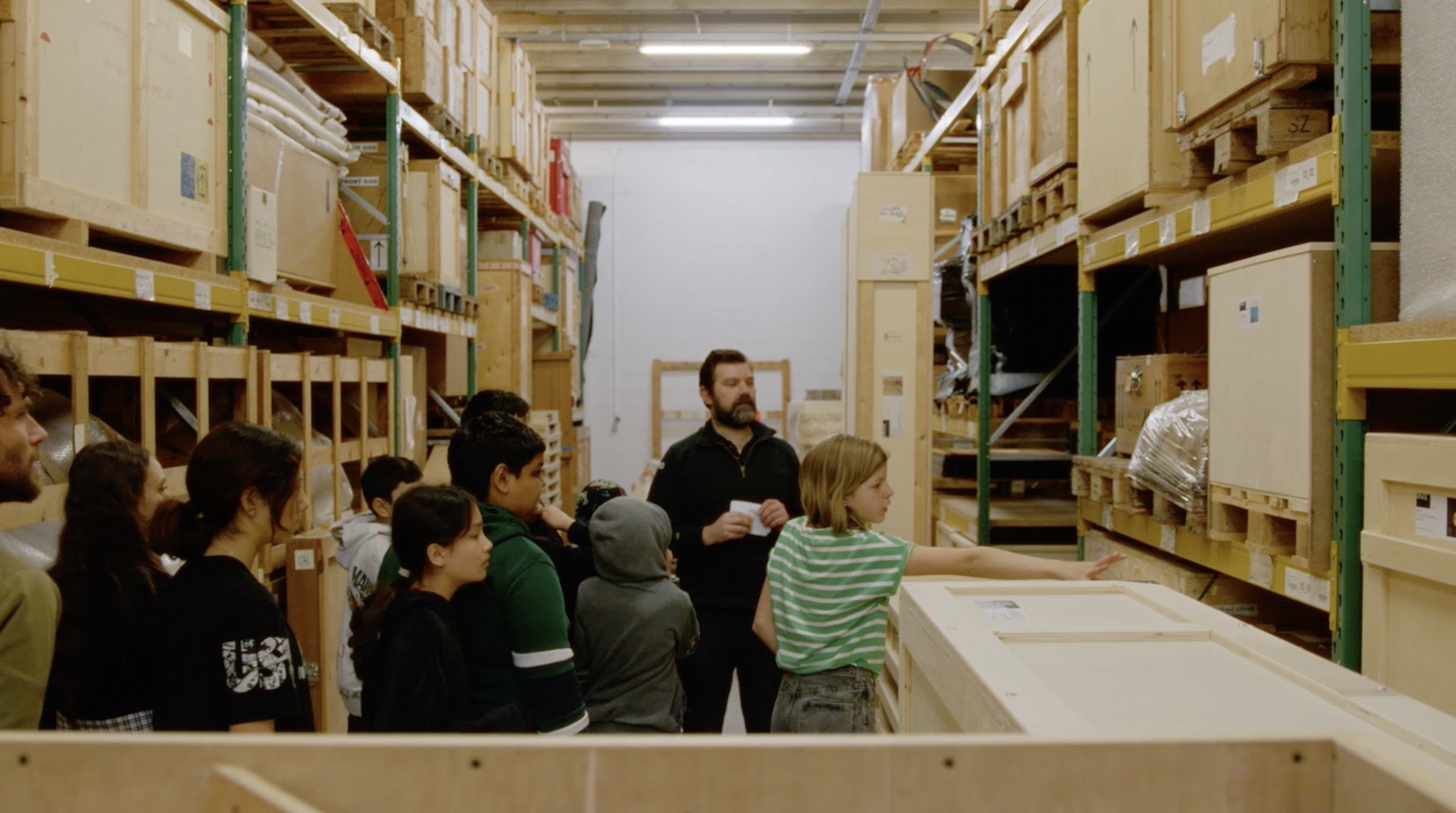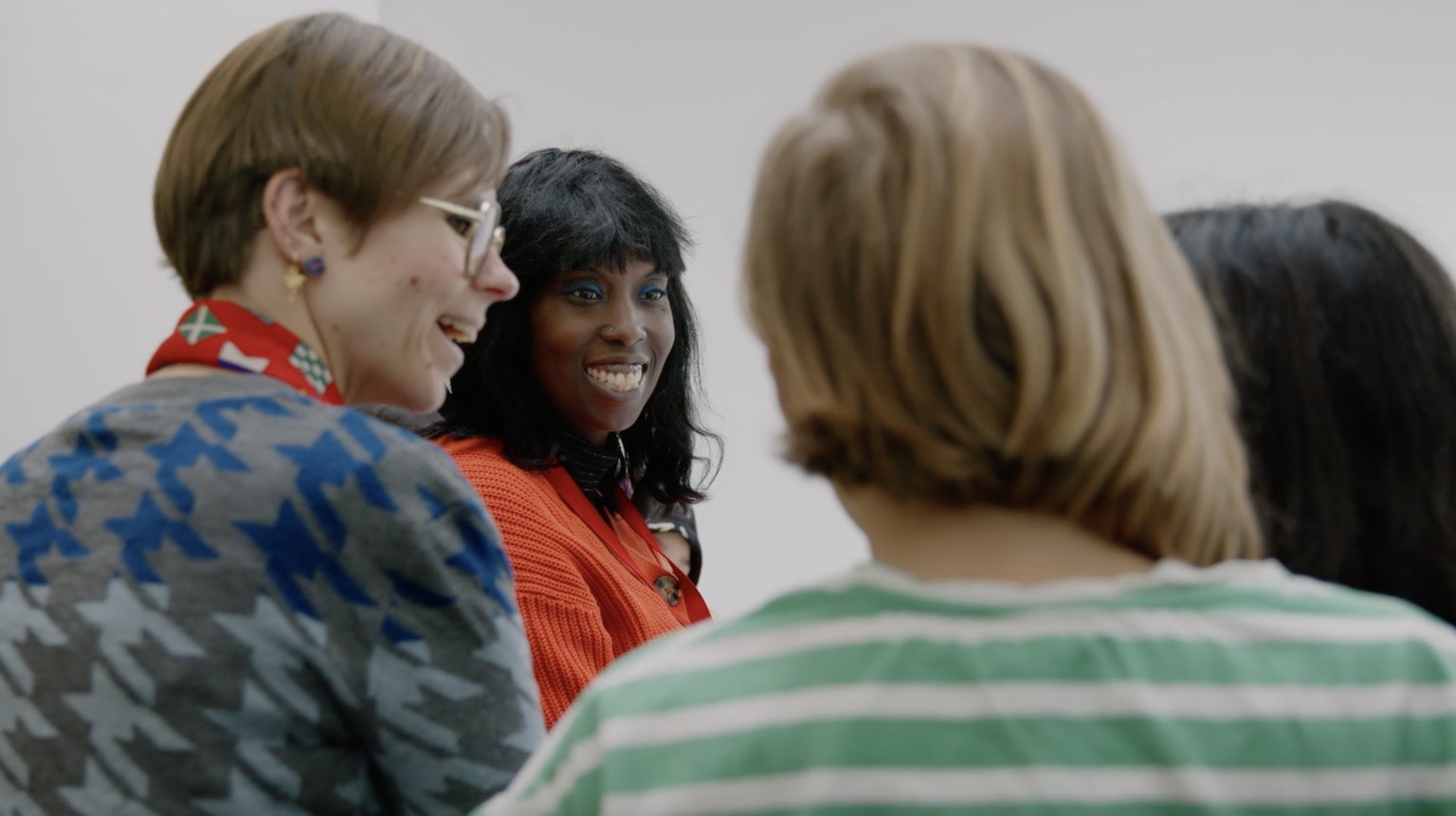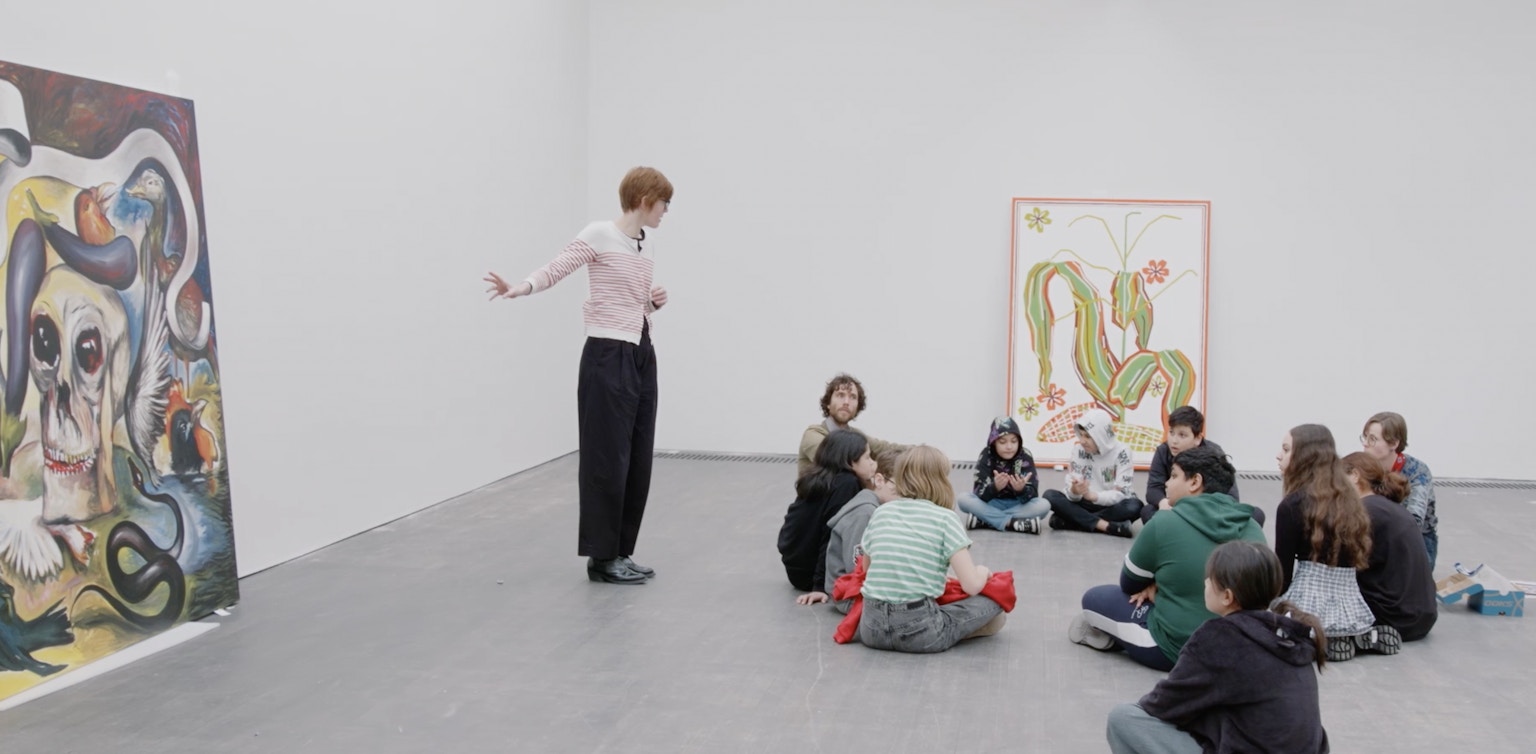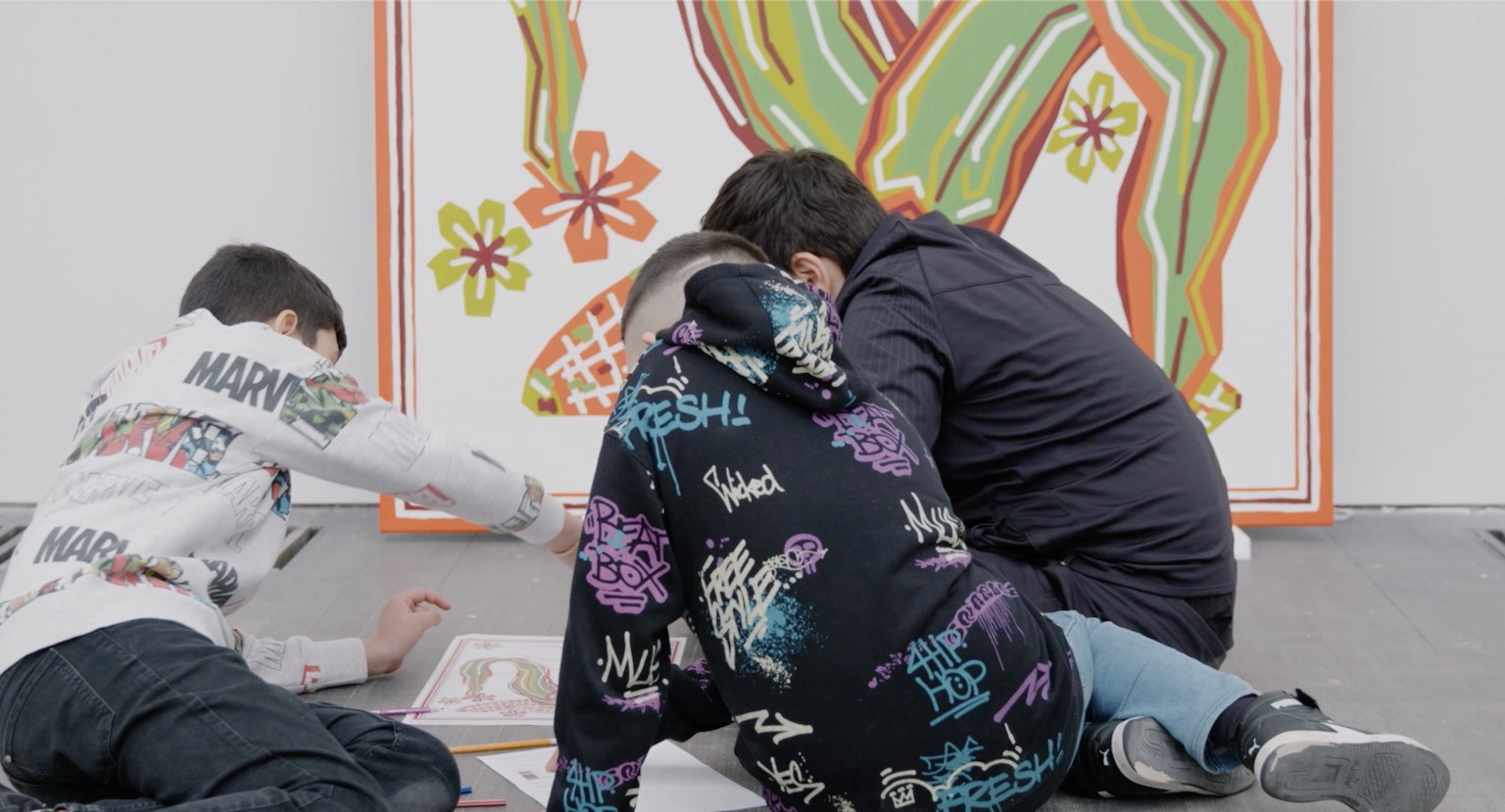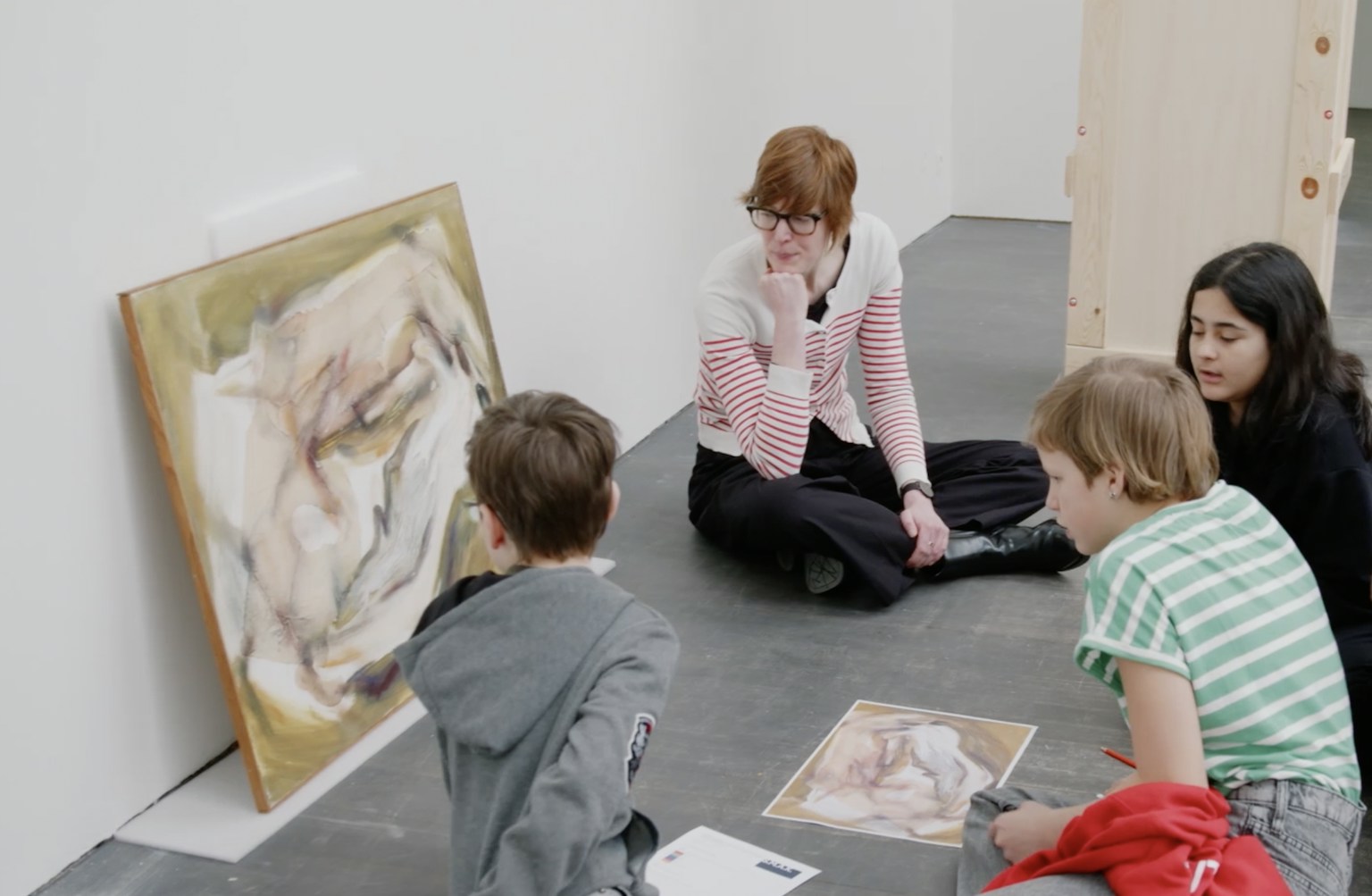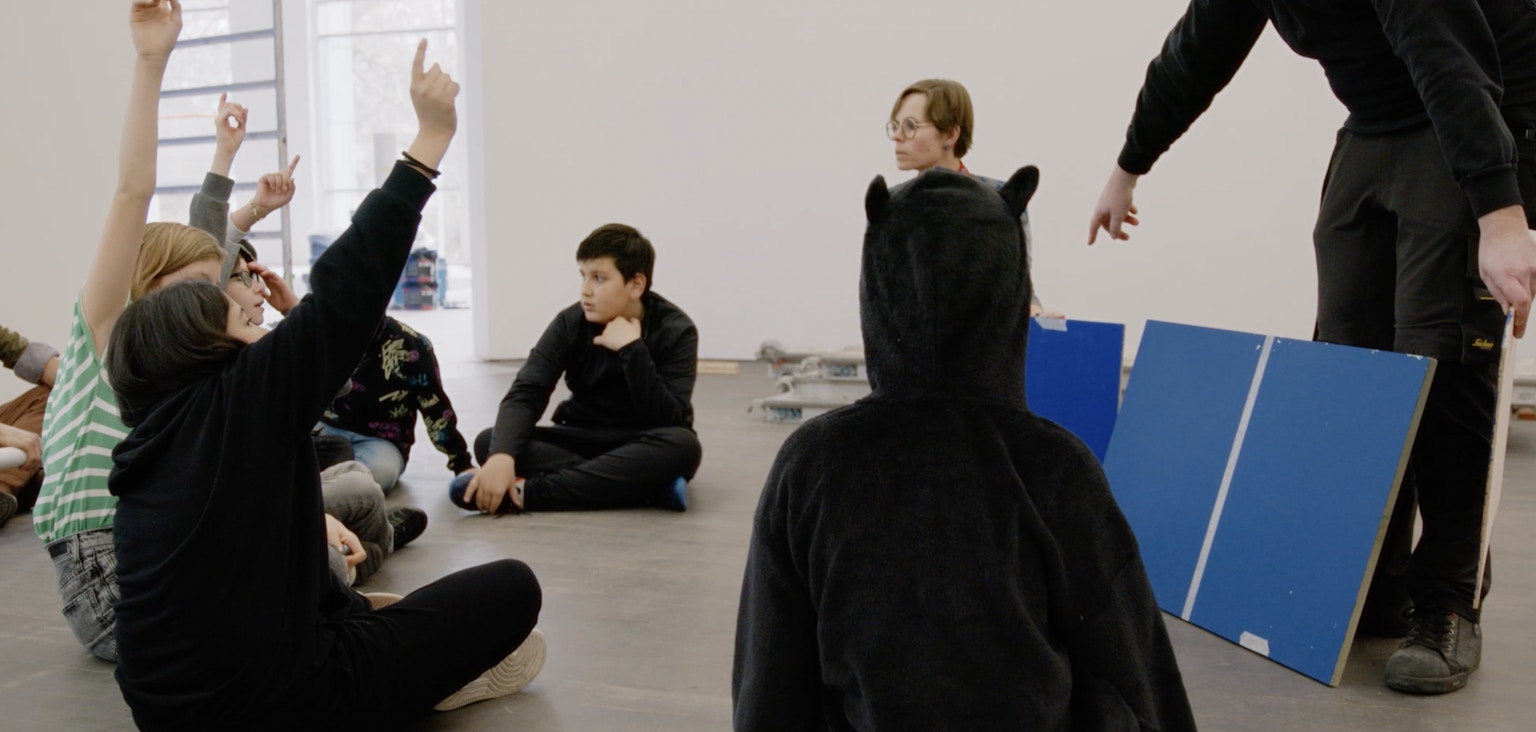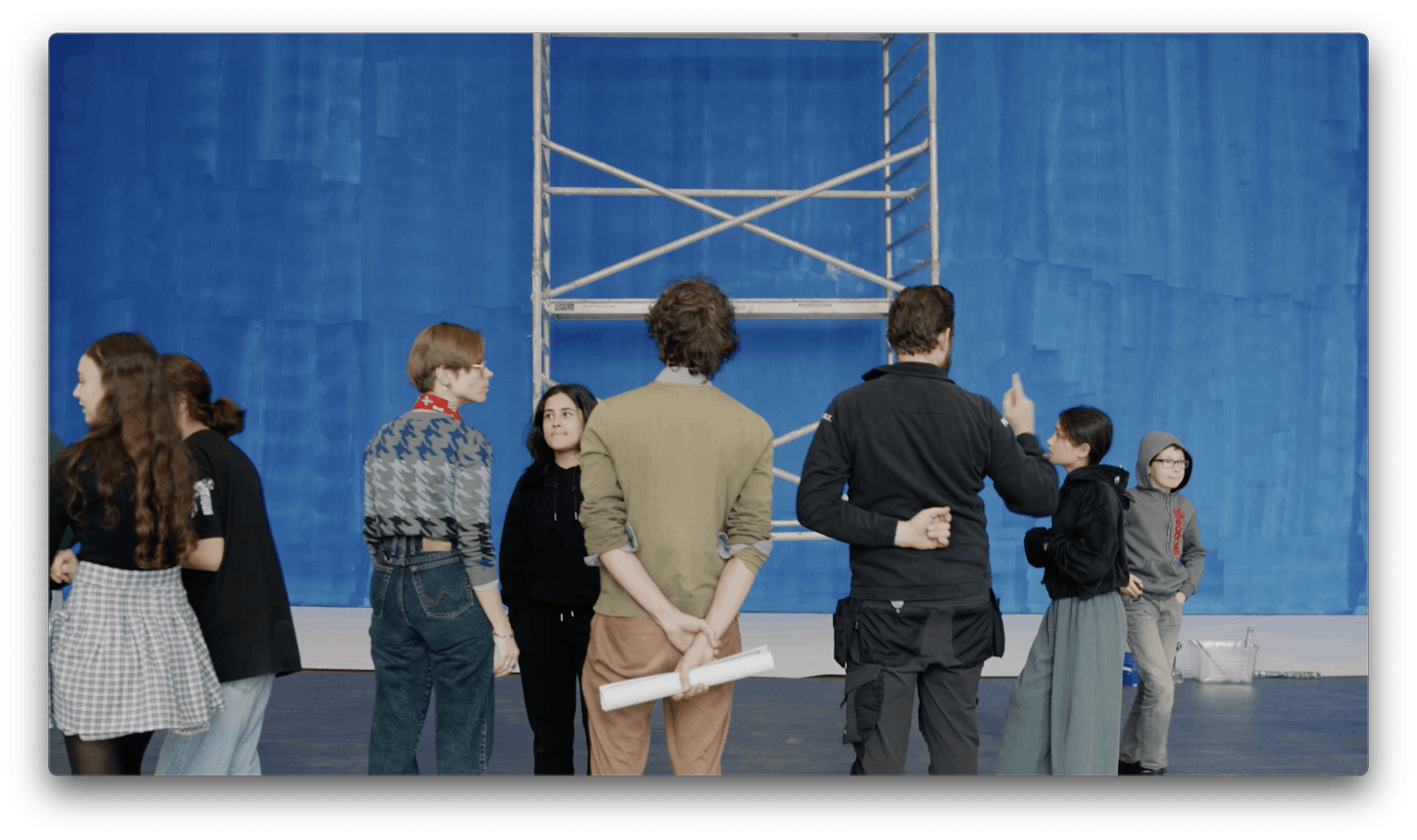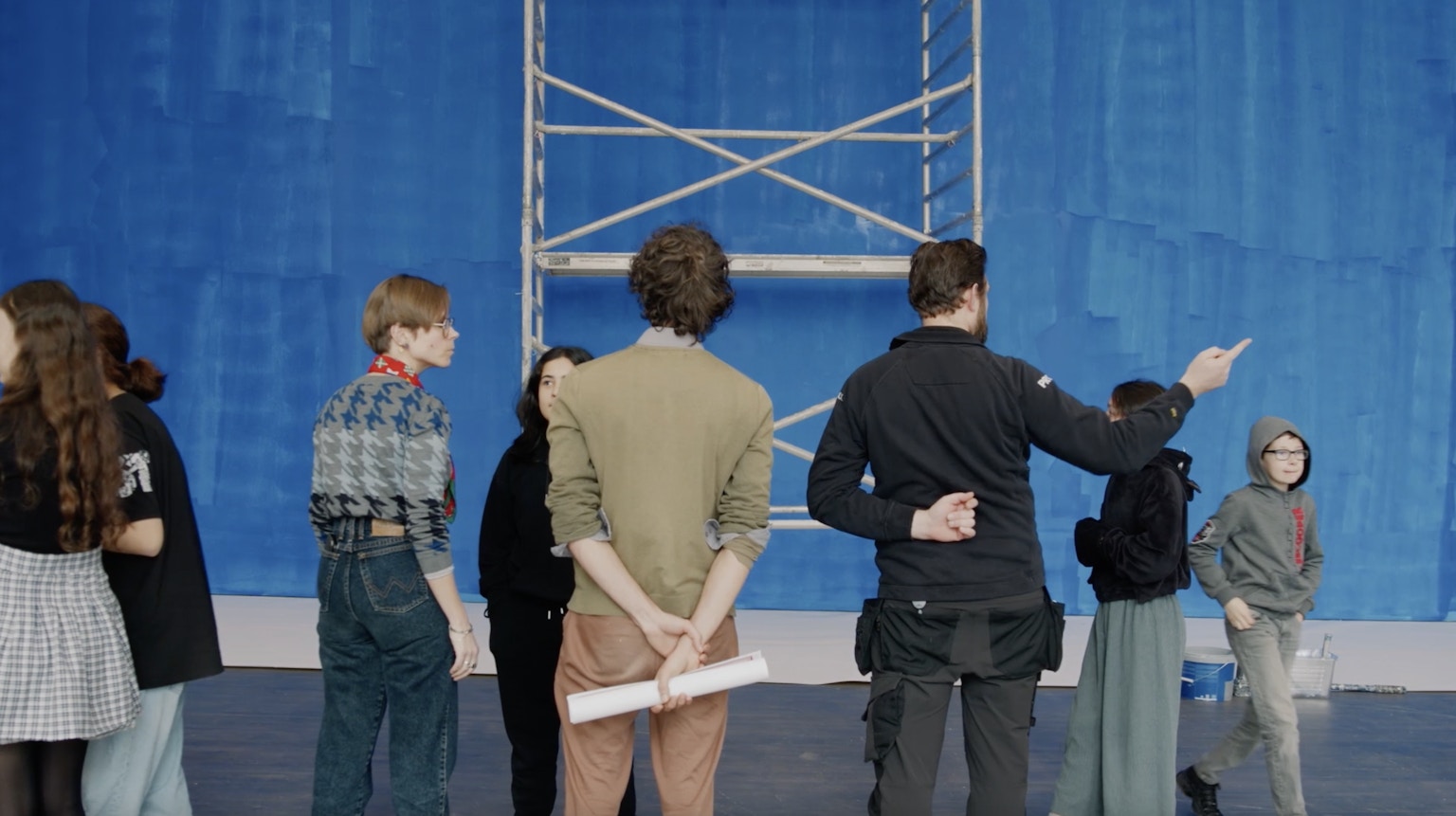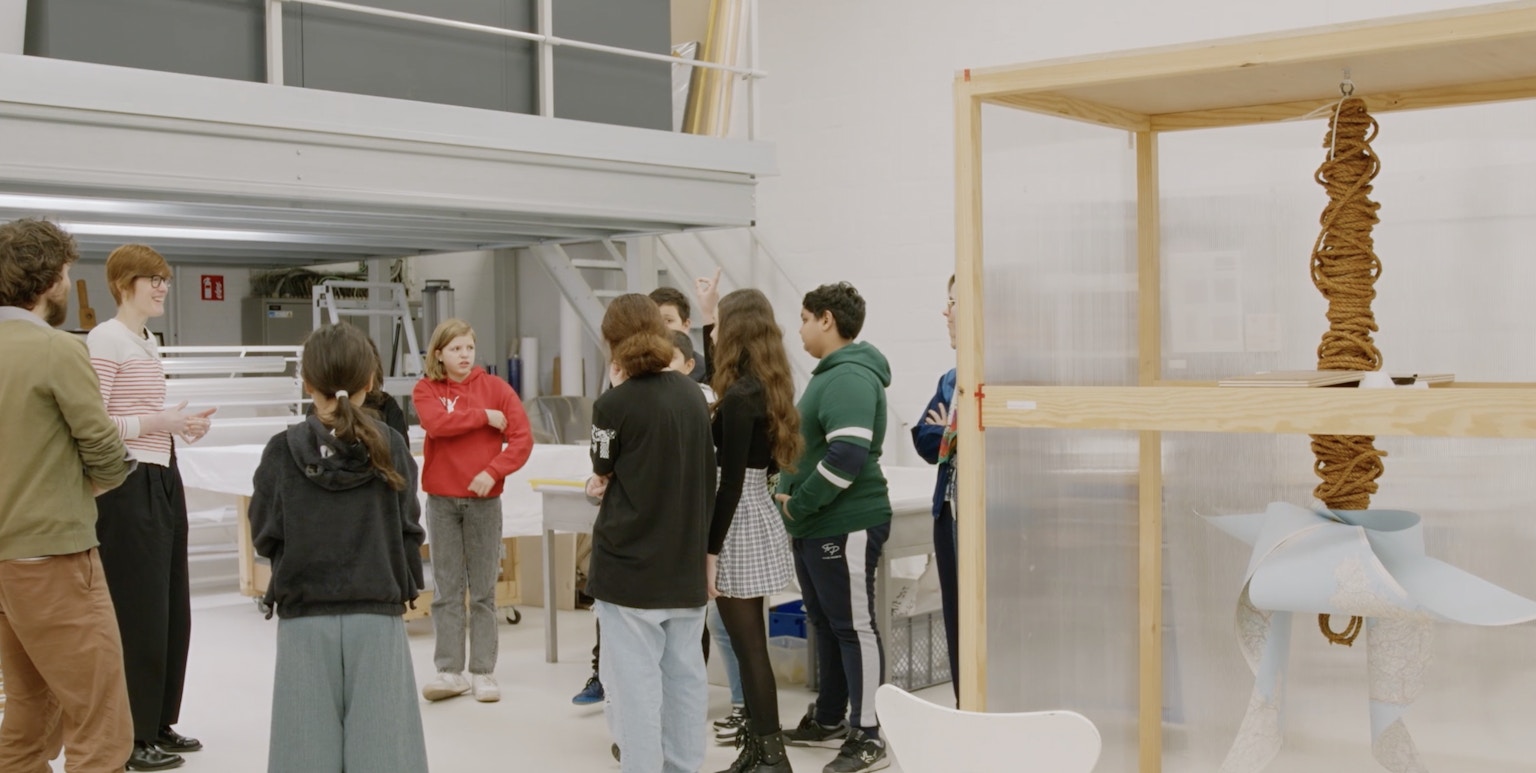Had you been to the S.M.A.K. before?
- Imrich: I didn't know it.
- Roos: I had been here before. With school and with home. But I didn't know Rose Wylie's artworks.
You tested out workshops, talked to curators, met artists and museum staff. Which moments did you enjoy most?
- Lima: I liked creating something myself more than walking around and looking at paintings.
- Roos: Me too. It was also special to meet artist Grace Ndirutu. And Haegue Yang wanted to colour a room all blue. We had to vote on 3 colours of blue. The result was really beautiful!
- Lima: I asked Grace in English for an autograph. She made one in the air. That's my favourite moment. She doesn't really look like an artist, more like a model.
- Imrich: We also collaborated on a short film. For that, we all made different pieces of a snake, just like Rose Wylie. If you put those back to back, you get a giant snake. I also liked exploring the building.
You were allowed to discover that big, wonderful building not only in front, but also behind the scenes. What did you see there that ordinary visitors never get to see?
- Roos: If you take the lift up to the depot, there are all the sculptures and paintings that are not on display now. Some I found even more beautiful than those in the museum.
- Lima: There are an incredible number of paintings and that's why it reminds me of a library. There are corridors that you can close and open.
- Roos: Each box has a number. A box with 10 C on it is in the tenth aisle. So a bit like in Ikea. And there were boxes. They have to take the red ones anyway in case of fire, those are the most important ones.
- Ilyas: The roof of the depot is also beautiful. It looks like that of a train station.
You also met the conservator there. From her, you got a quick course on how to prepare a condition report of artworks.
- Lyara: It's called the condition check. You have to check whether the artwork is still solid, whether there are any scratches on it from transport, for example. We were given a picture of how it was before, and had to check whether it is still in the same condition. We found scratches and spots. These turned out to be fly marks and cracks in the paint. That sometimes breaks when it dries. We also found hairs. They can only take those off with special equipment.
- Imrich: I would like to work there in the depot.
Really, what other job in the museum would you like?
- Ilyas: If I were to work here, preferably just at the ticket office.
- Lima: I would love to be a guide and give tours.
- Roos: Guide or artist, I think.
- Lyara: Image is not my thing, I prefer writing. Poetry for example, I'm more of a word artist.
Could there be a poem hanging in the S.M.A.K.?
- Roos: Of course. Just as we made up a story to go with a painting, you could also write a small poem to go with a work. Short, so it doesn't take 10 years to read it all.
The stories you made belong to the audio tour Image Detectives for Rose Wylie's exhibition. How did you start working on them?
- Rose: We first asked questions about the paintings and the artist to the curator. What kind of person is Rose Wylie? What do you yourself think of these paintings?
- Lima: And afterwards we wrote texts about the painting in separate groups. Each group was given a question to start the story.
- Roos: For example, the painting Breakfast included the question 'Can you tell by people's breakfast what country they come from?' Based on that, we wrote a story.
- Lima: There were also side questions like 'What do you see in it?' and 'What do you think of when you see that?' That's how we became visual detectives.
- Lyara: When we did the filming, it was quite scary and stressful for me. I have a fear of speaking in front of an audience and try to overcome it. It was special with that special, professional equipment. They could even cut out Lima's cough, I heard."
And the result is very special. There are no doubt visitors who have started looking at the works differently because of your stories. Has your view of art changed after five VIP visits?
- Ilyas: We are not allowed to touch anything. They are very strict about that. I do understand now that if everyone touches an artwork, it quickly looks dirty and worn out. The artist himself wouldn't like that either. But not everything that hangs here is art, I think.
- Roos: That also applies to me. I still don't understand how a stripe on the wall can be worth so much money. Art should be something you work on a lot, something you really have to be able to do, something you have to practise a lot for.
- Lyara: For me, it doesn't really matter what the art looks like, but what the artist wanted to tell with it.
What do you know now about the museum that you didn't know before?
- Lima: That sometimes they give €350 000 to a small painting and €550 000 to a large work. And some artworks are just priceless.
- Lyara: I didn't know they had new paintings. I thought a museum was about old things. Other museums have old, historical works.
- Roos: Some paintings are made of rotten eggs, banana peels and coffee. Really dirty. There is a painting with all the eggs on it. They even keep spare eggs in a cupboard. So if one breaks down, there are always the spare eggs. They even have extra fabric to put on them so you definitely won't see any difference.
Do you have any tips for other visitors, on how to look at paintings, for example?
- Lima: They can look at what is depicted on it and fantasise what it is about.
- Roos: You can look at the colours and the paint, whether there are thick chunks on it, for example.
And what is your ultimate tip for the S.M.A.K.?
- Roos: Don't talk too much and do more. Just listening and standing around is not as much fun.
- Ilyas: With active do-things, games and a surprise at the end, you have our attention.


